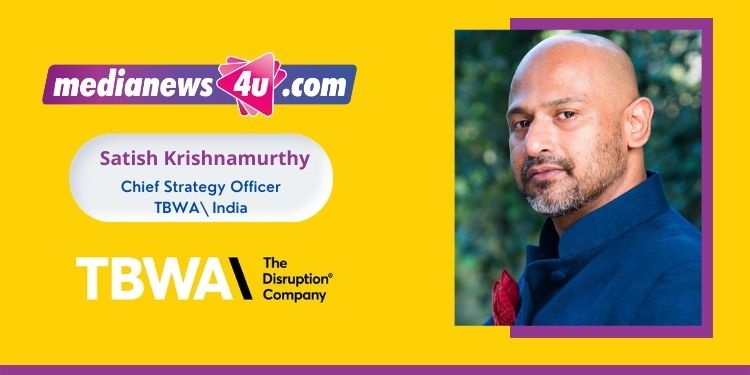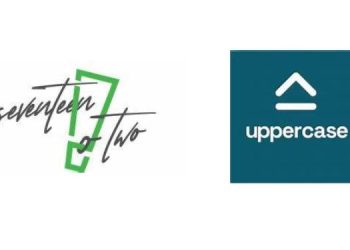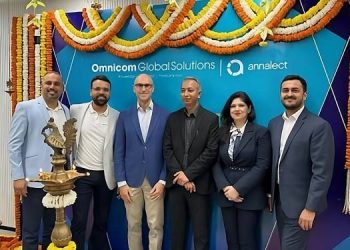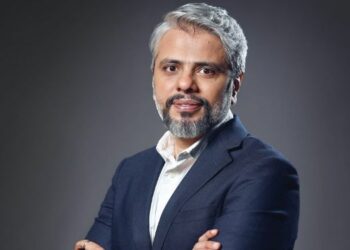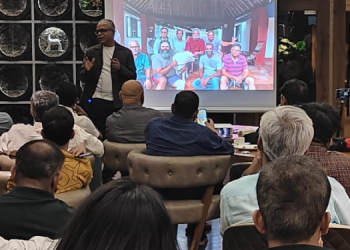TBWA\ is known as the home of Disruption. TBWA\ believes that this Disruption allows asking questions that others don’t; also finding answers that no one else looks for. It challenges the agency to go deeper into problems while broadening the vision of the agency. The brand is looked at with fresh ideas and also ensures that the consumers also do so. For TBWA\ culture does not stand still, they created Backs\ash, a cultural editorial unit to give insights from across the globe and deliver to every employee every day.
In an exclusive conversation with Medianews4U Satish Krishnamurthy, Chief Strategy Officer, TBWA\India the newly appointed CSO with 20+ years of international strategic experience talks about his role, how strategy can be made actionable, and much more…
As Chief Strategy Officer, TBWA India, what would your role be?
Advertising today needs a new language, a new way of looking at things and communicating. I have come in to drive new thoughts around strategy. It’s not just another Head of Strategy job here, but there is much more than that…
Mass media advertising will always be important in the Indian context but it need not be the only answer to every brief from the client. We need to drive strategy through the entire customer journey. Awareness is just the first step, and merely changing people’s perceptions is not enough anymore.I want to help clients bridge this gap between awareness and action.
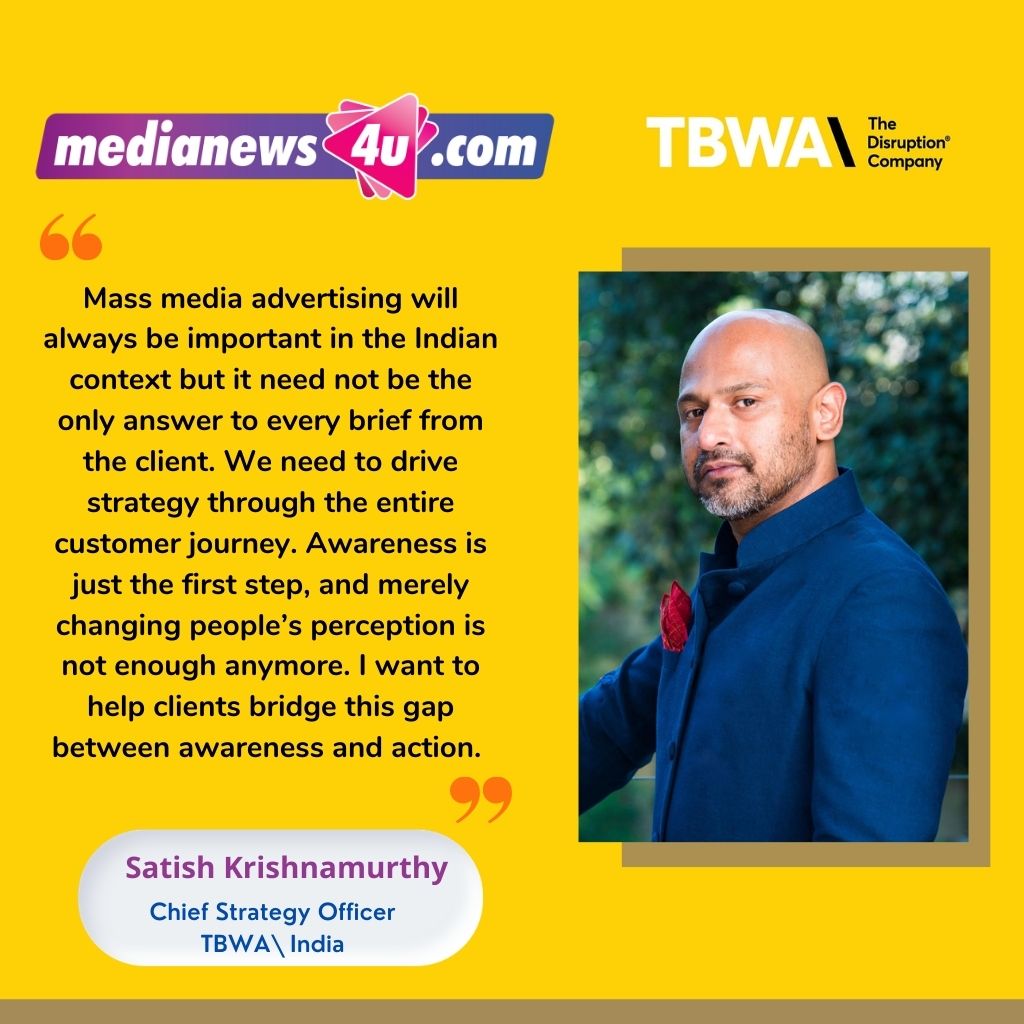
It is not just about advertising anymore. What’s pertinent today is the experience that people have with your brand through the journey. Thankfully, my timing is good with our new strategic tool, DisruptionX being launched in India. This model will help clients achieve disproportionate outcomes by tackling tasks across the entire funnel.
Advertising helps you open the loop, but we need to close the loop at the ground level with action. Disruptions, help us create smaller micro-briefs across the customer journey. The power of these smaller actions, combined with great advertising is what creates a huge impact. We call this X for 10X.
We want clients to see TBWA as aCreative Growth Agency. We are not just a supplier of messages;we want to be a creative partner in business growth. My task is to build teams that leverage business data, digital strategy, design and advertising to help clients execute all business tasks with speed.
You have vast experience as a planner, how does this now help you to strategize for your clients and brands?
I feel grateful for my diverse work experience. From advertising to comms planning to behavior consulting to brand management and then to creative problem solving, I have seen the entire range. Today, this diverse thinking is more important than ever to create a great strategy.
I have evolved my thinking. I now view strategy through the lens of a first-principles approach – What is the business problem that needs to be solved… then, what can be done to solve that problem, and only then… where does advertising, packaging, brand story, experience, retail fit into all this?
I now build strategy by shamelessly stealing inspiration from various disciplines – behavioral sciences, design thinking, experience design, brand management. What I can then do is recombine seemingly disconnected ideas with each other to create whitespaces that we never explored. The strategy should be the melting pot for many types of thought.
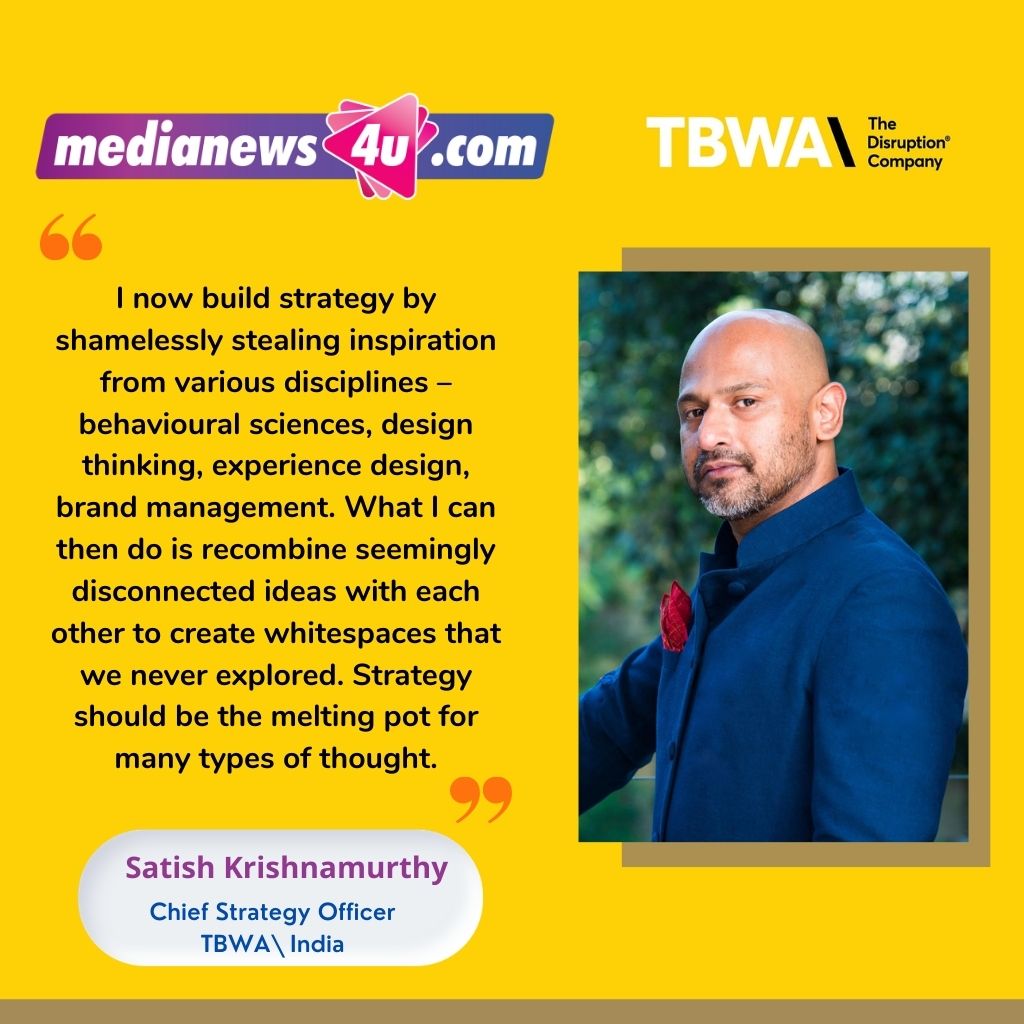
I am also driven to make strategy actionable for clients. Many times, the strategy remains academic, because the client can’t figure out what to do with it. Having been the client, I understand what that means. As agencies, we need recommendations that quickly allow the client to run with it and get it implemented. If ideas are not executed, they remain as a mere commodity.
Today there is so much data available, how is it used to get the best for the brands and get the maximum ROI?
I would think that a good starting point is – framing the problem correctly. What is it – get more customers? Increase profitability? Influence what people are saying about you? What do we want to solve with data?
Ultimately, the data analysis is only as good as its hypotheses. Our hypotheses have the power to ascribe meaning to numbers and transform them into insight. So, a good way for brands to leverage data is to ask the right questions and analyze data to solve those problems.
Data also helps us iterate and get better in real-time. Quick performance metrics enable you to keep tweaking your brand strategy and develop an iterative growth approach. This ability to influence data in order to drive growth is a huge game-changer for clients.
What data also do is, help us deliver on sniper objectives. From clicking on links to downloading apps to sharing content, what action do you want to do? Data can help you hyper-target, deliver clear calls to action and drive behavior change.
How important is research when planning for a brand? And what kind of research is needed?
I believe, the quality of your strategy hugely depends on the quality of your inputs. The question I want to ask is, where are strategists getting their inputs from? What is informing their point of view?
Research allows us to trust what we see when we craft strategy. If you don’t have your ears to the ground, it will be tough to make these connections.The more you know, the better you can connect incongruent insights to arrive at big ideas. The real magic of research lies in how well you can springboard into strategy.
With new age listening and big-data tools, it is now possible to find even qualitative insight from just numbers. While we use these tools, it’s important not to lose touch with the ground-level reality of the business. That is where the real answers lie.
We should go into the consumer’s habitat more often. We should spend time on the road, we should observe purchase behavior in the shops, and we should interact with consumers in their homes. Let’s accompany staff in sales beats, let’s find innovative ways to understand consumer motivations… If we do all this, we can inform more strategy than sitting in a room trying to brainstorm with a machine.

TBWA is always believed in Disruption and creating meaningful communication strategies. Can you elaborate and give me a few case studies if possible?
Meaningful work can only happen if you personally believe in something enough to take it up as a personal cause. While the global network drives interesting efforts, I feel TBWA\India has raised the bar in creating meaningful communication strategies.
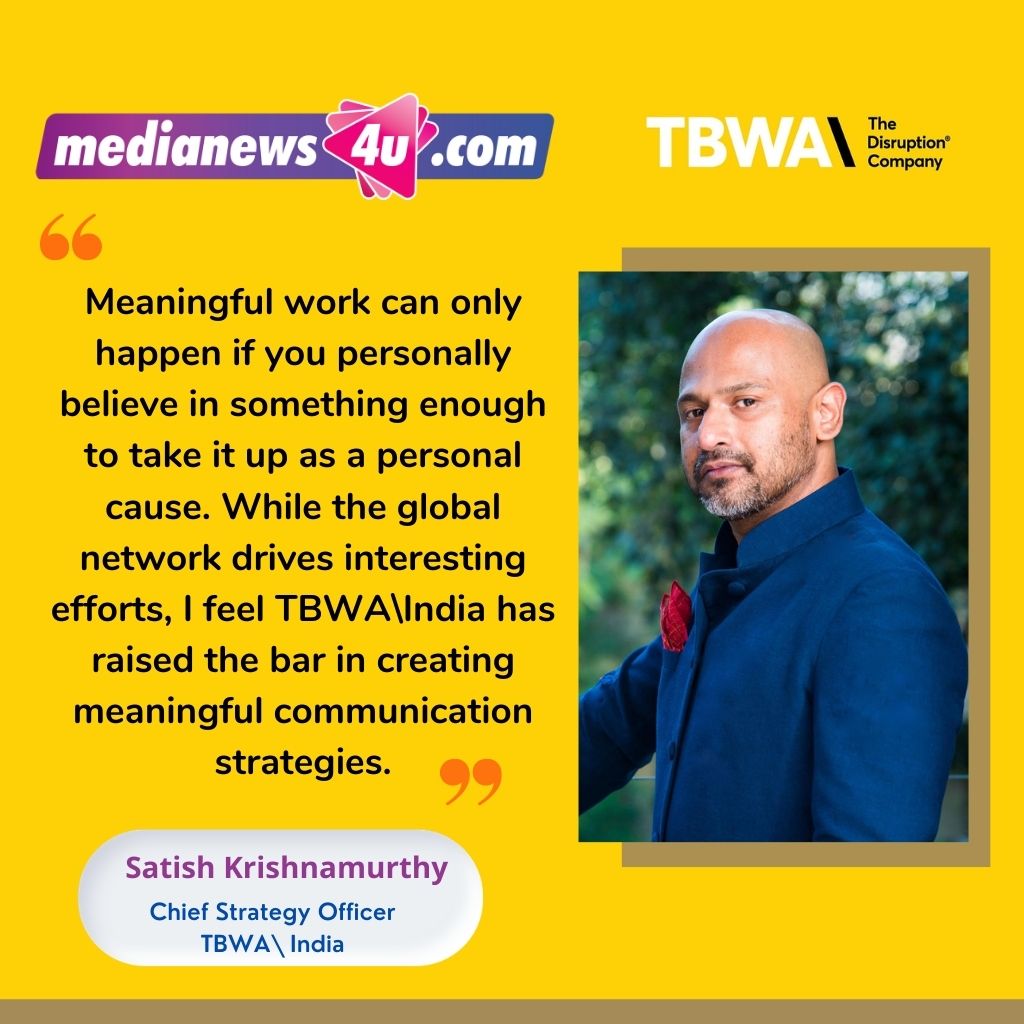
Two great pieces of work stand out for me. ‘Blink To Speak’ is Disruption in its true form. It has transformed the way we communicate with ALS patients who cannot speak. This is a great example of looking at the problem through first principles and providing a Disruptive solution – a new language created by blinking your eyes.
‘One Mindful Mind’attempted to achieve a big vision. It turned parents into counselors for their own kids. It addressed the need for mental health to develop a positive outlook for kids. With the thoughtful design of the toolkit, including flashcards, journals, and workbooks, we nudged positive behavior to reinforce strong relationships between parent and kid.
It makes me proud to be associated with the agency that brought both these ideas to life. It is a wonderful feeling.
We have seen a global slowdown now, thanks to the pandemic last year and with the second surge now, how are you envisaging India’s ADEXgrowth?
Rather than talking about ADEXgrowth, I look at it as an ADEXshift, there will always be an advertising mandate for clients. But today, I see clients have business problems for which advertising is not necessarily the way to impact consumer behavior. The whole concept of advertising has changed.It’s no longer just a piece of content. Everything you do as a brand communicates.
For example, if you’re a D2C client, your website is your advertising. Because, if your website is kickass, then your business is growing. You want to design the site, not just make advertising.
If you’re working on your omnichannel strategy, you want to create a great tech-integrated retail experience. That experience is your advertising.
If you have a large base of customers, then creating a slick loyalty program will help you monetize this base. That loyalty program is your advertising.
Unless the agency does not add value, it will always seem that the ADEX pie is shrinking. Zoom out to see the big picture and you will see it is actually shifting.
As they say, “to catch a thief, you have to think like a thief.” An agency has to start thinking like the client and say “Where can I offer value as an agency if I was the client”. That is how the agency can grow with the client, whether ADEX is growing or not.
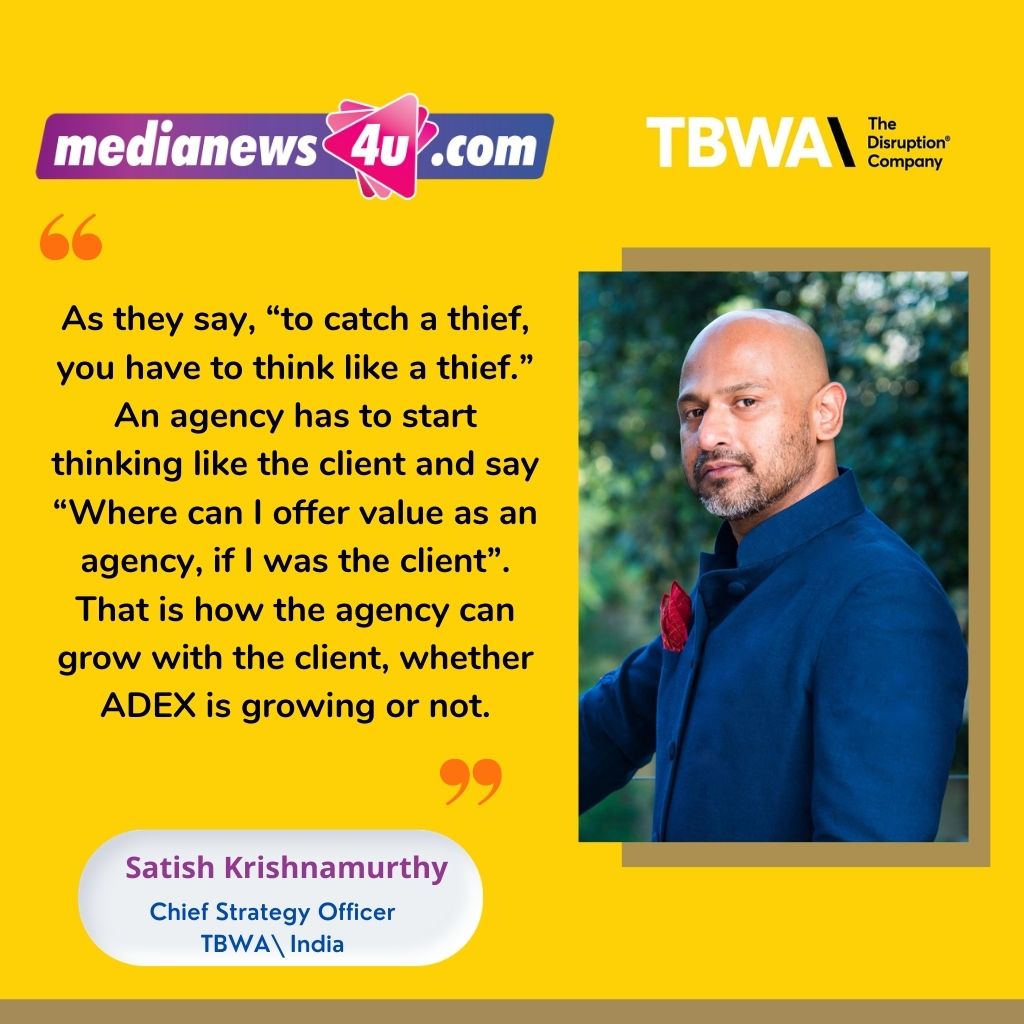
How do you see the ad spend pie? Where do you think clients want to put their money in and also seeing print coming back?
You can see for yourself that media is fragmented more than ever. We need to think of media planning in a way that can leverage this fragmentation in the client’s favor. This means you need more numbers and more types of messages to get the job done.
With data affordance, people are also spending time online, but not in the usual places. They are now on alternate platforms like Dailyhunt, Sharechat, and others. Clients now want to activate these alternate platforms to drive engagement and connection with the brand.
At the other end, clients are seeing the value of looking through the customer journey. They are planning for more multi-screen marketing. Given the integration that the cloud brings in, it is now easy for marketers to target people across devices once you are connected. So, while TV has lost its dominance for some brands, I see print being used along with more integrated multi-screen planning, not plainly in isolation.
How do you see 2021 panning out for the advertising industry on the whole?
This nomenclature of being called an “advertising” agency is becoming a burden for the industry. Why would the client call you then? Only to make advertising, of course.
Every client is working with multiple agencies. When I was a client, I was handling14 agencies at one time for different tasks. As an agency, I then ask, how can I help the client consolidate? Can I offer other valuable services, so that client doesn’t see me as just another advertising agency? Yes, I can help you with that (whatever it is) also, why not…
Agencies are only meeting the CMO today. With consolidation, agencies need to slowly start interacting with others in the company. Do some tech for the CTO, do some experience for the CXO, do some optimization for the Sales Head, do some consulting for the CEO. Ask the client, what business problem you can solve for them today.
That is the shift I see happening. Agencies seeking newer growth paths should move beyond the CMO to other key decision-makers in the company.
Going forward, what would be TBWA strategy to stay ahead of the curve?
I’ will say it again. As TBWA\, we want to be a consulting partner that shapes growth strategy for our clients. If we have to live up to this space, then we need to think across the journey and add value at every step. Our DisruptionX model will help us unlock these objectives for each and every client. It enables us to be task-specific, yet channel agnostic in everything we do.
As TBWA\, we want to leverage culture for every brand. We are in the middle of building a strong cultural engine that can help us understand behavior, actions and mindsets. We want this to inspire strategic recommendations for every business objective. If used well, this cultural engine, combined with the power of data and design can help our clients grab a larger share of the future.
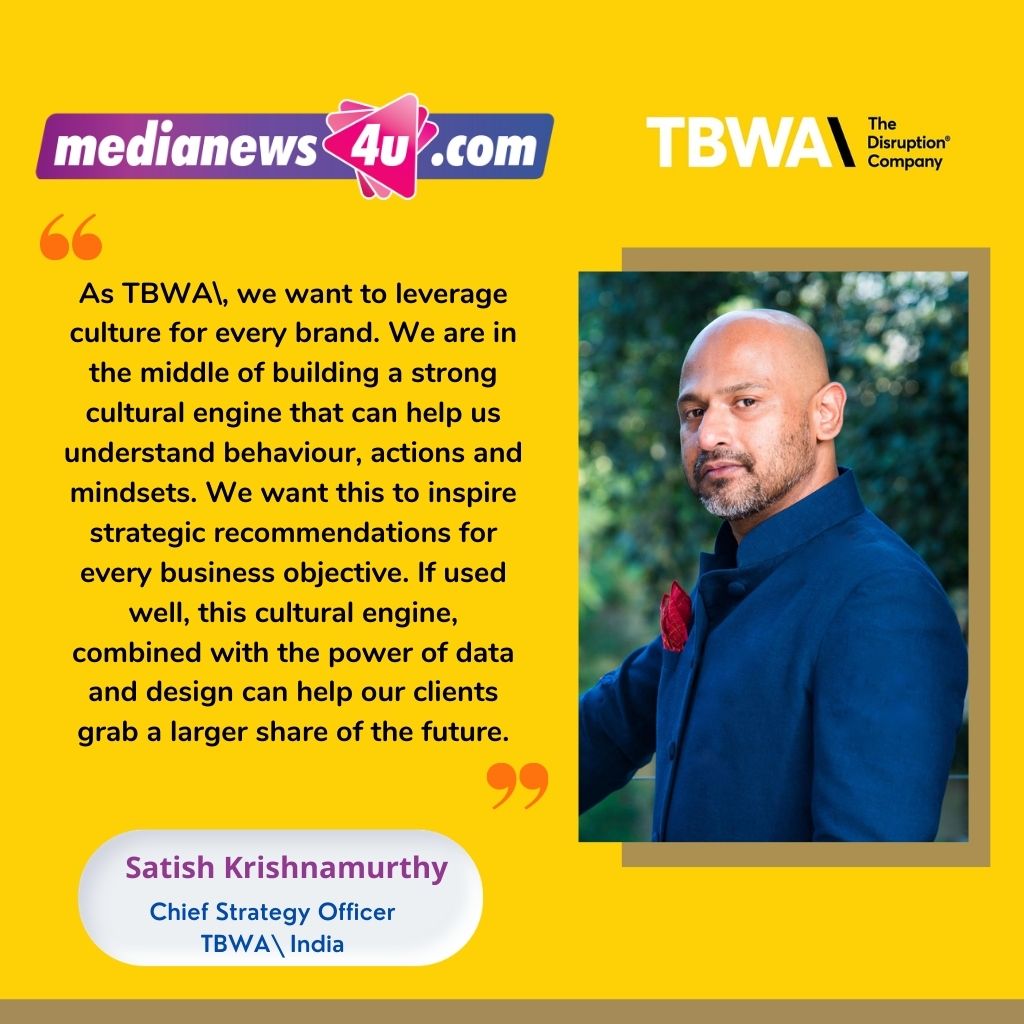
At TBWA\, we want to focus on doing more path-breaking advertising this year. The problem now is no client is building Brand Love, everything has become transactional.
If we can build brand love, people will treat the brand as their own and become raving fans. We want to do more cutting-edge brand work this year so that we can Disrupt for every client. Compellingadvertising language that can move people with emotions has the power to set up every brand for greatness.
What will you as a leader mentor and how do you look at newer talent?
The first thing is… for people who are already in the industry, you have to stop them from moving out. What can we do to get them excited and stay back in the industry? People want to be challenged, be surrounded by great talent, and contribute actively to groundbreaking work.
We have to build environments that encourage leadership to do all this.In the initial years, make talent feel excited about the journey, but show them how the process is messy. Get them to be independent, let them make mistakes, let them learn, and take themselves towards leadership. The more leadership skills you can develop in people, the more they will want to stay with you. And, if they stay with you, they will stay in the industry. Simple.
Next, how do you get smarter people into the industry? One way is to inspire them to join your agency because they are influenced by the work you do. If you can get people to say “wow, I want to do this kind of work”, they will automatically seek you out and join you in their growth journey. That’s exactly how I got into advertising. I sought it as a career choice and chose to grow in the industry.
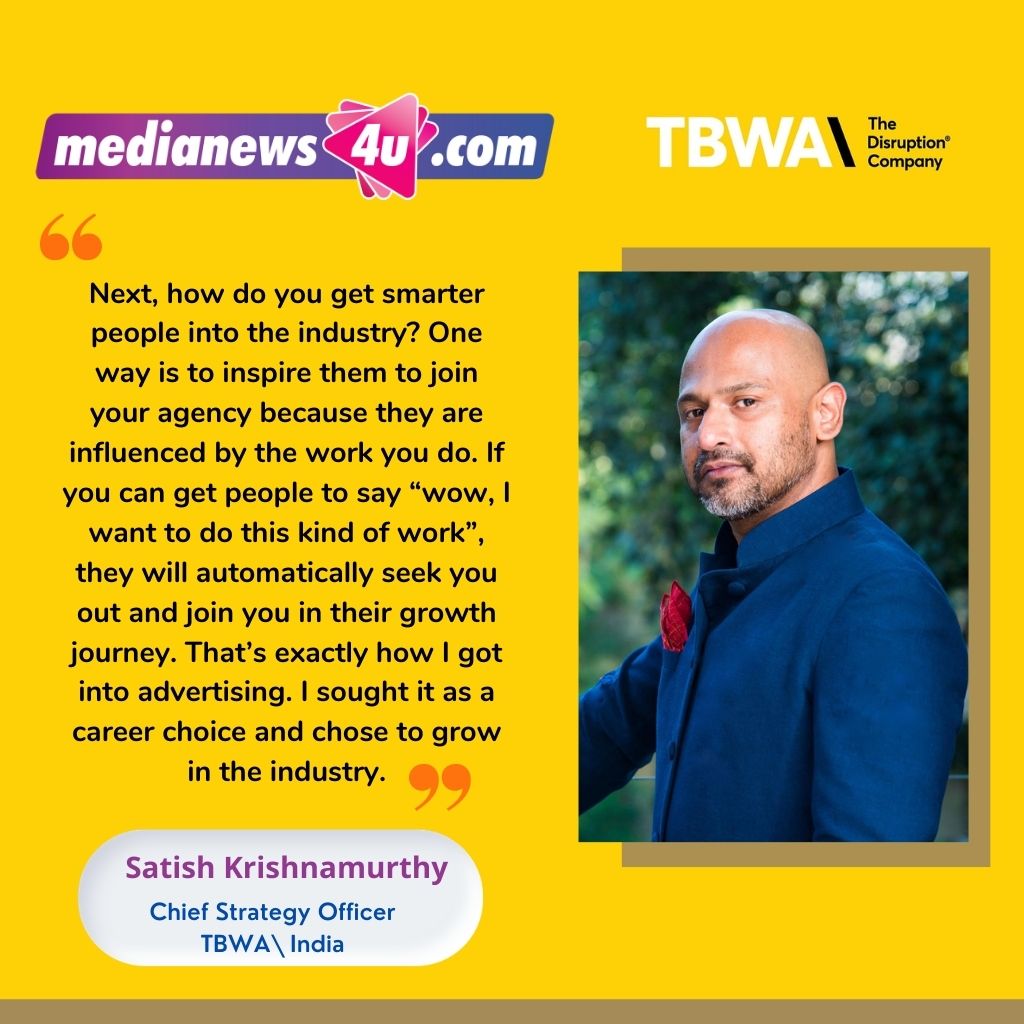
Creating and perfecting a process to craft path-breaking work becomes the biggest currency to build talent. Both within the industry and outside it.

